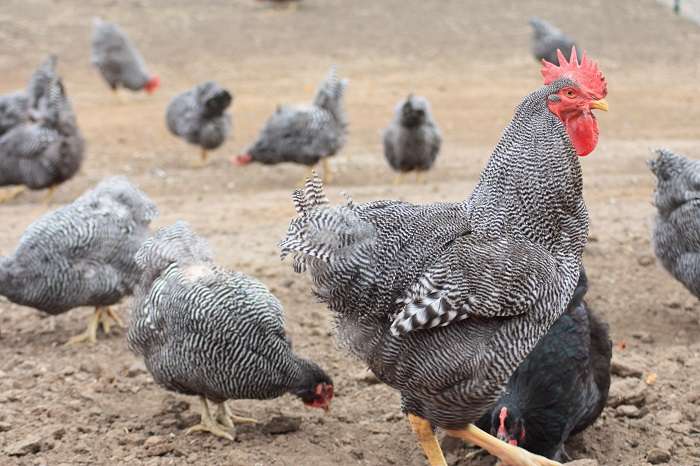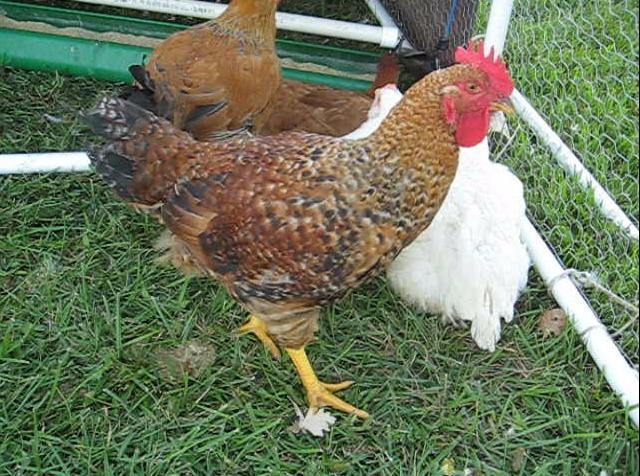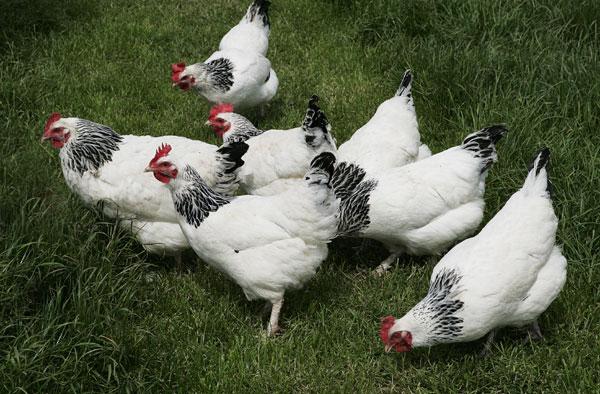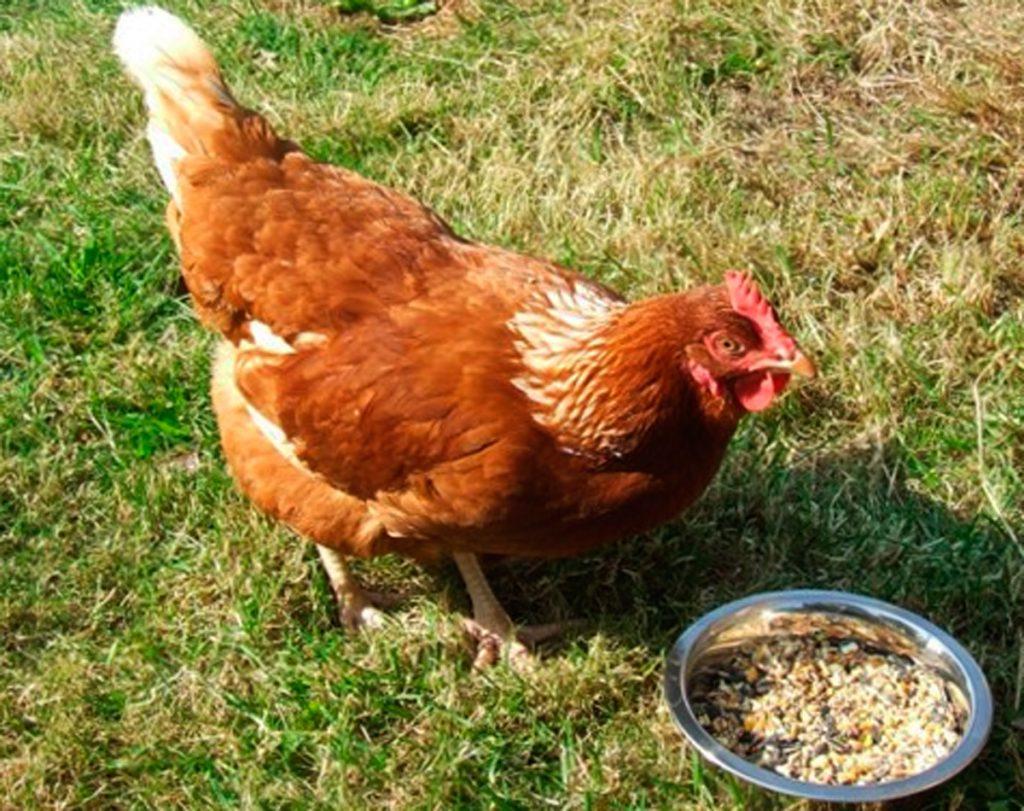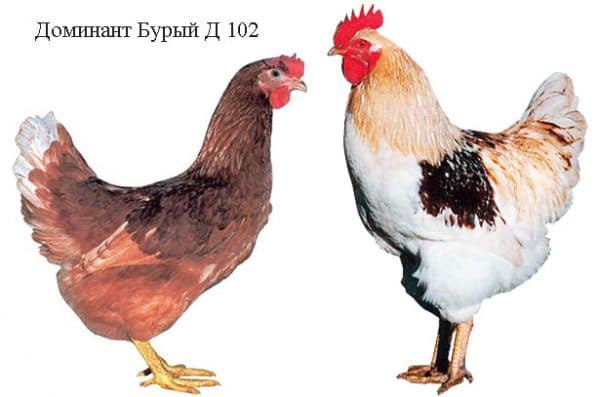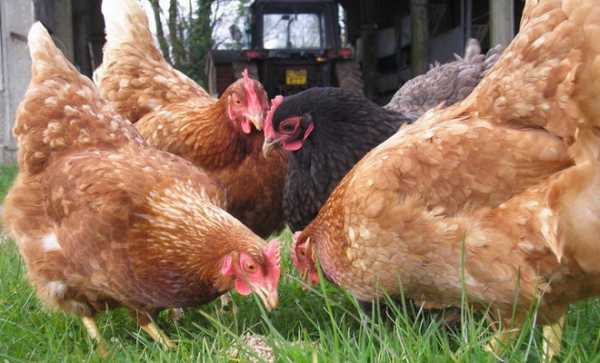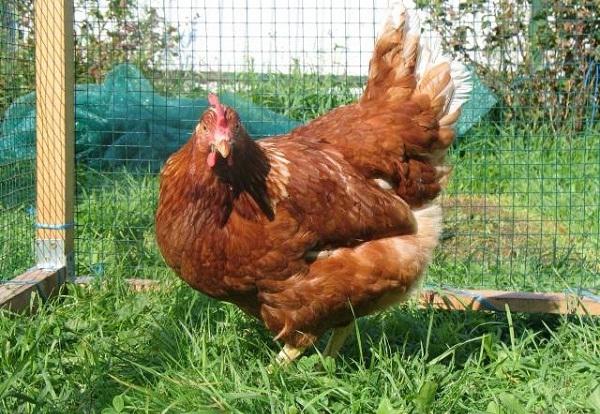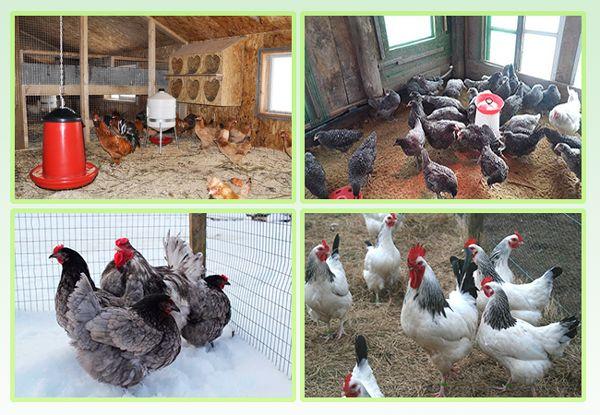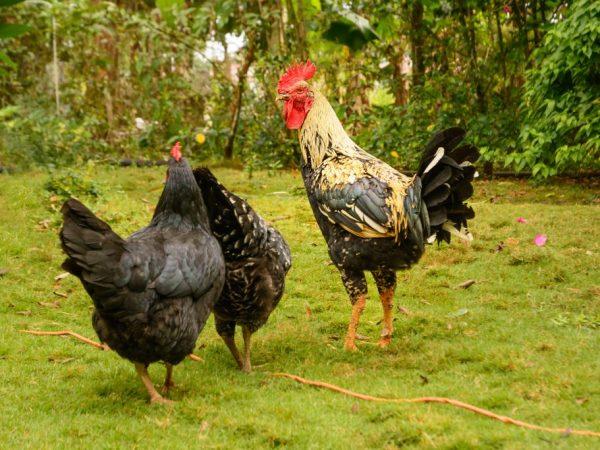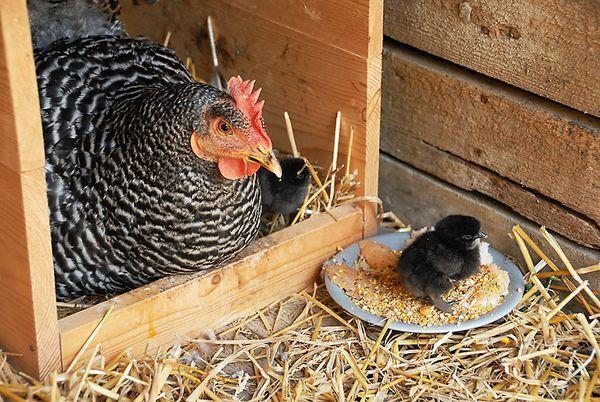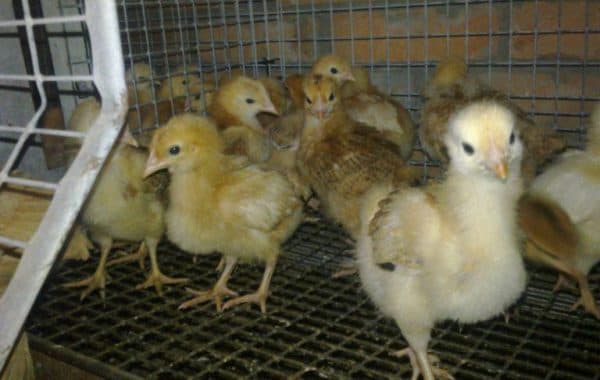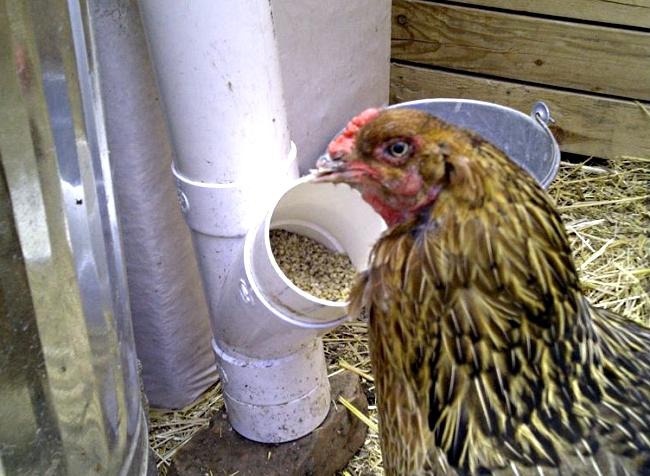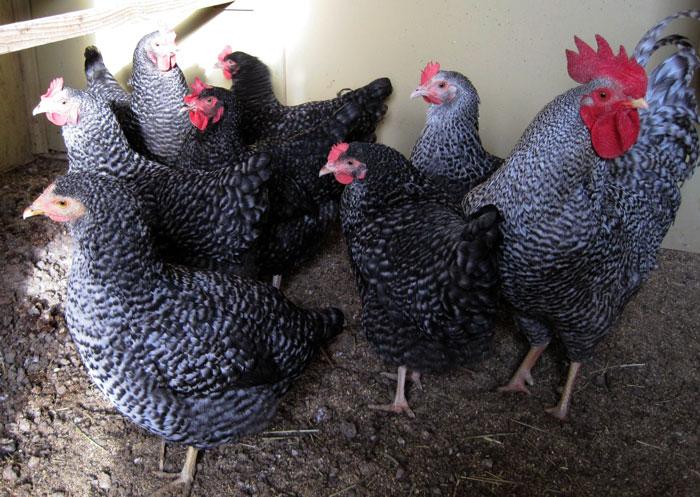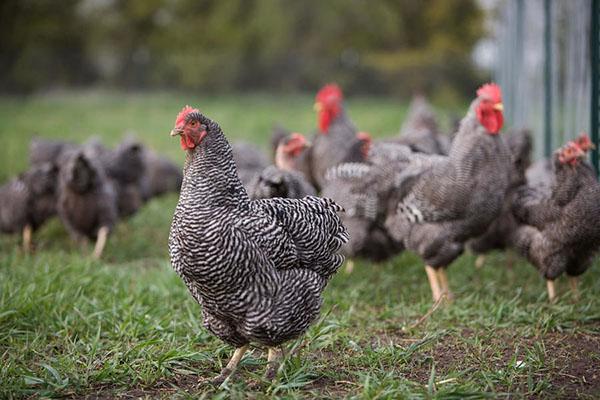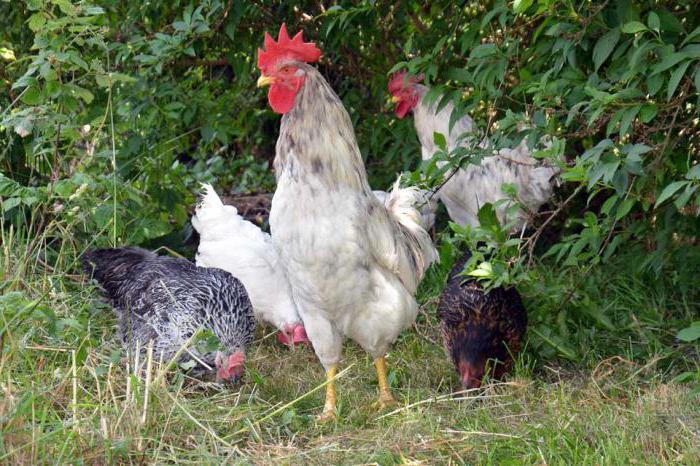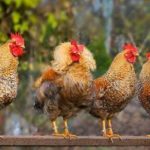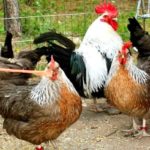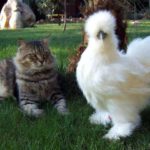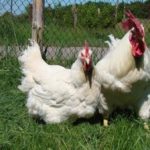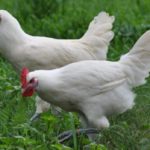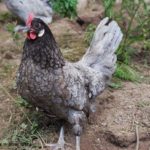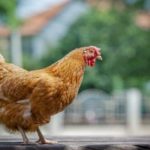One of the best breeds among chickens is the Dominant. Growing and caring for them are not difficult. The species is distinguished by its increased ability to lay eggs. Each variety of this breed differs in appearance, egg color, and productivity. To maintain the health and productivity of poultry at a high level, care should be taken to ensure optimal growing conditions.
- History of the breed
- Appearance and varieties
- Speckled D 959
- Partridge D 300
- Tricolor D 301
- Black D 109
- Black D 149
- Sussex D 104
- Sussex D 304
- Leghorn D 229
- Red D 853
- Yantarny D 843
- Blue D 107
- Brown D 102 and D 192
- Red striped D 159
- Red striped D 459
- Temperament
- Productivity and egg production of chickens
- How to choose?
- How to find out the gender of a chicken?
- Advantages and disadvantages
- Conditions for keeping Dominant chickens
- Poultry house requirements
- Walking yard
- Installation of feeders and drinkers
- Shedding
- Planned replacement of livestock
- What to feed the bird
- Chickens
- Adults
- Breeding rules
- Possible diseases and their prevention
History of the breed
The Dominant chicken breed belongs to the egg-meat group, bred in a Czech laboratory. This is a mix of several types of chickens, including Sussex. Breeders note that this variety of chicken is characterized only by positive qualities.
Chickens are distinguished by their attractive, bright appearance with motley plumage and high productivity. In one year, each hen produces up to 312 eggs. Young chickens begin to lay eggs at 5 months.
New crosses (cross breeds) are characterized by high immunity, so they rarely get sick. In addition, they withstand the effects of adverse factors.
Appearance and varieties
Description:
- Chickens have lush plumage, so they appear large.
- The comb and earrings are small in size, reddish in color.
- Roosters have a bright crimson comb.
- The legs are strong, short, yellow in color with lush plumage.
- The wings are of standard size, tightly pressed to the sides.
- Feathers can have different colors.
- The weight of one individual at the age of 5 months is 2.5 kg.
Each subspecies of Dominant chickens has its own distinctive characteristics.
Speckled D 959
These are chicken crosses - hybrids that are characterized by a large list of positive qualities. The speckled appearance of D 959 has a calm character. The plumage is bright, motley, lush. A small comb and earrings of a reddish hue. The weight of adult chickens is 2.5 kg. Laying hens lay up to 322 eggs per year. The weight of one copy is 62 g.
Partridge D 300
Highly productive crosses are characterized by egg production. The head of the chickens is small, the comb and earrings are red-scarlet. The feather cover is thick, golden-brown in color, short legs are strong. Every year the hen lays up to 302 eggs with beige or white shells.
Tricolor D 301
The hybrid belongs to the egg group of chickens. Birds produce 304 eggs annually and gain body weight up to 2.2 kg. The comb and earrings are deep red. The iridescent plumage consists of golden, brown and red shades.
Black D 109
Dominant chickens DS 109 are black. The comb and lobes are deep red. In a year, a chicken can produce up to 290 brownish eggs. The weight of an adult chicken is 2.3 kg.
Black D 149
The breed is highly productive, producing up to 305 brown-shelled eggs annually, weighing up to 64 g. The chickens are distinguished by their deep black plumage, with white stripes on the breast. The male has brighter coloring. There are white and yellow patches throughout the body.
Sussex D 104
Chickens of this group are characterized by good productivity and early egg production. They have egg and meat purposes. The body of chickens is dense, the head is small. The pointed comb and earrings are reddish in color. The main color of the feathers is snow-white. There are noticeable black spots on the wings and chest. The tail consists of black feathers. Chickens have a calm disposition. Every year the hen lays up to 322 eggs.
Sussex D 304
Chickens of this species have snow-white plumage. The feathers on the tail and head are black. Every year, each laying hen produces up to 268 white-shelled eggs. The weight of one specimen is 63 g. The weight of laying hens at 1.5 years is 2 kg.
Leghorn D 229
The birds are snow-white in color. The comb is soft, falls to one side, and is red in color. The productivity of the crosses is high.The female brings up to 322 eggs per year. The bird's weight is small, 1.6 kg.
Red D 853
The chicken variety is distinguished by its red-burgundy feather color. Every year the hen lays up to 285 eggs. Birds of this species are unpretentious, have a calm disposition, and adapt well to new conditions.
Yantarny D 843
The plumage of the birds is an amber-brown hue. Each year, one hen lays up to 311 eggs. The weight of one egg is 63 g, the shell is brown. The weight of chickens is no more than 1.6 kg.
Blue D 107
Chickens of this breed have an exotic type of color. The head, back and neck have a bluish tint in combination with black and blue. All other parts of the body are gray. The red comb has a solid shape and does not bend to one side. A chicken can lay up to 302 eggs annually. The weight of one egg is 62 g. An adult chicken weighs 2.20 kg.
Brown D 102 and D 192
The body of the Dominant 102 bird is covered with lush brown-brown plumage. Roosters have lighter colored feathers. The predominant color is white, with brown inclusions. At 2 years, the animal’s body weight is 1.6 kg. Each year, each laying hen brings up to 318 eggs weighing 64 g of white-cream color.
The most popular is the type of chicken D 192. The color of the plumage is brown. The female brings up to 307 eggs per year, which have brownish shells.
Red striped D 159
The hybrid is distinguished by a red-brown tint of feathers. Laying hens lay 312 eggs every year. The weight of one specimen is 61 g. The body weight of an adult chicken is 2.1 kg.
Red striped D 459
The color of the feathers is variegated, red-brown. The tail consists of wide gray feathers. The scarlet comb of the red striped chicken variety GS 459 is tilted to one side. In a year it will be possible to collect up to 311 eggs with brownish shells. The weight of one egg is 62 g.
Temperament
The temperament of chickens of the Dominant breed is accommodating and calm:
- all individuals are active;
- characterized by loud cackling;
- chickens are not pugnacious, they coexist well with other types of birds;
- timidity of chickens is noted;
- when changing habitat they experience stress, but adaptation occurs quickly.
All these features do not in any way affect egg production. Individuals behave best in an open area, without fences. But they get along quite well in a smaller room with other varieties of chickens.
Productivity and egg production of chickens
The characteristics of the breed indicate that the egg production of chickens is very high. Every year, each female is capable of laying up to 322 eggs. Dominant chickens lay eggs with brownish, snow-white, brown and even greenish shells. The peak productivity of chickens with white and colored eggs occurs when the animals are two years old.
How to choose?
In order for dominant chickens to enjoy high productivity, you need to make the right choice:
- You should only buy individuals from trusted sellers.
- Individuals of the same age are selected. It is best to take chicks that are 12 days old.
- Good, healthy individuals are active, constantly digging in the ground, running around the chicken coop.
- You should choose young animals with a smooth, soft-to-touch comb and lush, even plumage.
To choose the best chicken varieties to raise, you also need to become familiar with the basic characteristics.
How to find out the gender of a chicken?
The sex of crosses can be determined already at two days of age. Cockerels are distinguished by light plumage and white spots on the head. The chickens have dark feathers and no spots on their heads.
In other varieties of chickens, sex is determined by the characteristics of their plumage.In hens, plumage appears on the sixth day, and in cockerels - much later.
Advantages and disadvantages
The main advantages of the Dominant chicken breed include the following characteristics:
- early maturation and early onset of egg production;
- large eggs, their weight reaches 72 g, with excellent taste;
- if given proper nutrition, they lay eggs every day;
- rapid weight gain;
- calm, accommodating character;
- quick adaptation to new conditions;
- poultry of this breed can be kept in both limited and free space;
- do not require special care.
This variety of this breed also has disadvantages:
- Laying hens love to look for hidden places to lay eggs;
- maternal instinct is at a low level;
- chickens begin to peck eggs if the room is cramped.
Conditions for keeping Dominant chickens
Egg production and meat quality largely depend on the living conditions of poultry. Therefore, it is important to consider some recommendations for caring for chickens.
Poultry house requirements
The interior of the chicken coop must be kept clean and dry, but there are other requirements:
- care should be taken to insulate the walls, roof and floor of the chicken coop in winter;
- it is better to make the floor from wood and arrange the bedding from peat or straw;
- lighting should be dim;
- nests are installed at a great distance from each other;
- the room should be spacious (4 birds per 1 sq. m);
- The chicken coop should have separate feeders, containers for wet food and water.
Since chickens of this breed do not fly well, there is no need to build a pen with high fencing. In summer, the chicken coop should not be too hot, drafts should not be allowed.
Walking yard
For walking, an enclosure should be installed, preferably on the eastern or northern side of the building.There must be good lighting and a lot of greenery. Thanks to free-range poultry, they are enriched with vitamin D and the taste of the meat improves. Birds have the opportunity to obtain food on their own: they constantly nibble grass and look for bugs and worms.
Installation of feeders and drinkers
The interior of a chicken coop is not complete without drinking bowls and feeders. In summer walking, these accessories are also a must. There are two types of feeders: hopper and periodic. In the latter case, food is poured into the container in the required volume several times a day. Hopper feeders require that feed be kept in a container at all times.
The volume of the feeder and drinker should correspond to the number of chickens. Each individual should have 13 cm. It is important that all animals have free access to food. Otherwise, weak birds will be left without food.
Shedding
Dominant chickens begin molting in the fall months. Laying hens of the Dominant breed lay eggs even during the molting period, but the quality of the clutch decreases slightly. At this time, special attention should be paid to nutrition. Include foods rich in vitamin D and calcium.
Planned replacement of livestock
Chickens of the Dominant breed, under favorable conditions, can live up to 9 years. Productivity decreases, but does not disappear completely. In the first years, the hen lays up to 324 eggs. After the 4th year of life, the number of eggs laid decreases.
It is recommended to carry out a planned change of livestock after two years of animal life. By the age of three, productivity drops by 20%. You need to take care of purchasing young individuals in advance.
What to feed the bird
Chickens are unpretentious to food. They can be given all the food allowed for poultry. But to improve the quality of performance, you should carefully plan your menu, including only healthy ingredients.
Chickens
Features of feeding young animals:
- For the first 10 days of life, chicks should eat every 2 hours. Cottage cheese, semolina or corn grits, and boiled crushed eggs are offered as food.
- From the 5th day it is permissible to give herbs and pharmacy vitamins.
- From the 8th day of life, chickens' diet includes a mash made from a decoction of meat and yogurt.
- From the 10th day it is allowed to add vegetables; they begin to give crushed eggshells and chalk.
- Then ground grain, bone meal, and boiled potatoes are used as feeding.
Immediately after feeding, any remaining food should be removed from the area where the chickens are kept. Be sure to provide constant free access to clean water.
Adults
To ensure high chicken productivity, balanced and highly nutritious feed should be used. Adults need to be fed three times a day:
- The diet must include wet mash, which is made from meat broth, a variety of cereals, vegetable dishes and bran. During the winter months, the mash should be heated.
- Grains with a high protein content are beneficial.
- In the poultry house you need to place containers with shell rock, chalk, and small stones.
- The daily menu should include products such as fishmeal, low-fat cottage cheese, and milk.
- In the warm season, it is necessary to provide the bird with green food in sufficient quantities. In the winter months, pharmacy vitamin-mineral complexes should be added to food.
Breeding rules
Chickens of this breed have poor maternal instinct. They are not capable of incubation and it will not be possible to raise young animals using quons. Hens are impatient and have difficulty incubating eggs for a long time.
Farmers have to purchase chickens from a poultry farm. Some prefer to take eggs for further maintenance in an incubator, others buy already hatched chicks.
You should buy chicks older than a week. At this time, the bird will already get stronger and will be ready to move to a new place. If you take day-old chicks, there is a high probability that they will not survive transportation.
When raising chickens, you should follow some rules:
- chickens are placed in a clean, disinfected chicken coop;
- The walls should be insulated and drafts should be eliminated;
- the first days the air temperature should remain at +32 degrees;
- from the 10th day of life, the temperature should be gradually lowered by 2 degrees, so that by the age of one month the thermometer shows +19 degrees.
Possible diseases and their prevention
Despite the fact that Dominant breed chickens have high immunity, sometimes they can encounter diseases:
- The disease pullorosis is manifested by loss of activity of individuals. The stomach is primarily affected. Chickens become motionless, refuse to eat, breathing quickens, and the feeling of thirst increases. The scallop takes on a bluish tint.
- With a disease such as pasteurellosis, the limbs become bent and swollen, and the body temperature rises. Birds refuse to eat, mucous discharge is observed from the nose. The scallop takes on a bluish tint. The disease is common among individuals up to three months old. Mice and rats become carriers.
- Salmonellosis is a common infectious disease. The pathogen affects all internal organs of the bird. Symptoms include loose, foamy stools, difficulty breathing, and loss of appetite.
- Coccidiosis is manifested by loose stools, loss of appetite, decreased body weight and egg production.
It is important to notice a sick bird in time and isolate it from other, healthy individuals.
Preventive measures will help reduce the risk of contracting infectious diseases:
- nutrition should be proper, rich in vitamins B, D, C;
- according to the recommendations, timely vaccination should be carried out;
- Vitamins and minerals should be added to the feed;
- the chicken coop should be periodically disinfected and ventilated daily;
- chickens should be purchased from trusted suppliers.
New chickens should be placed in a separate room for 12-14 days. During this time, any infection will manifest itself with any symptoms. If this does not happen, the young animals are calmly moved to a common chicken coop.

